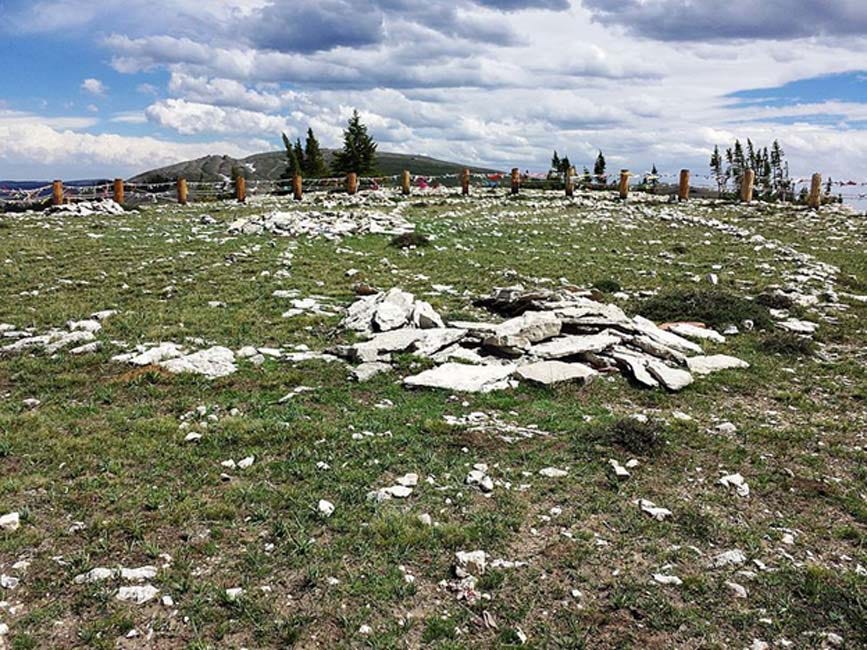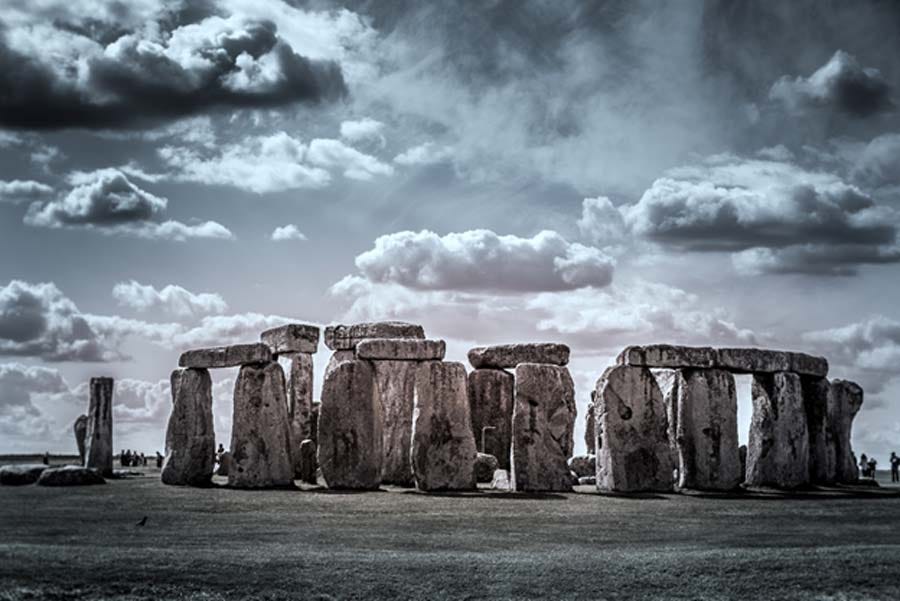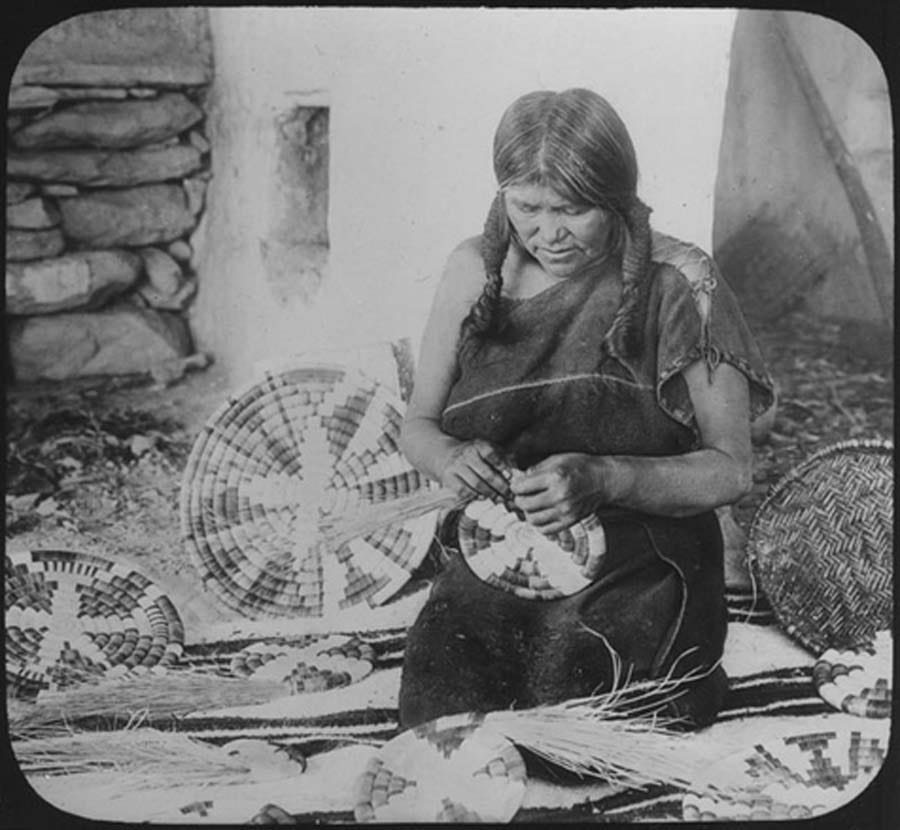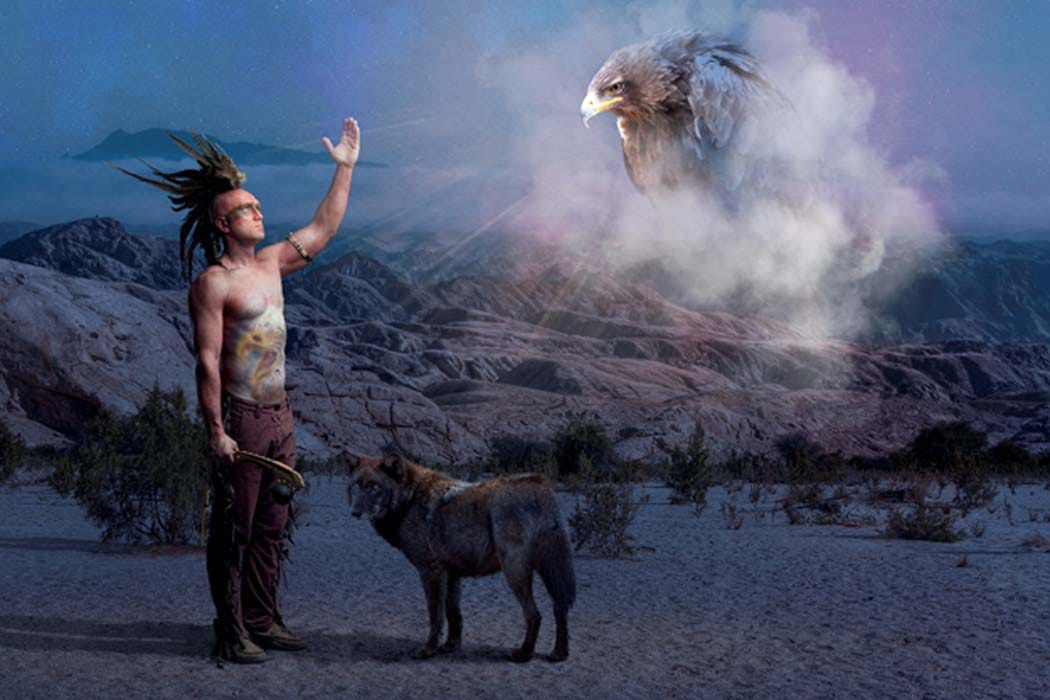Ancient and Mysterious Medicine Wheels of the American West
A hundred stone constructions dotting the landscape of the American north-west, called ‘Medicine Wheels’ by the ignorant, may be pre-dating the Egyptian pyramids to 5,000 years ago. At first glance they may seem primitive, yet they are aligned with constellations, perhaps pointing to a lost civilization’s pinpointing heaven. As American pioneers began to move across the Mississippi River and confront the vast north-western prairies, they discovered curious concentrations of stones set out to imitate, at least to those who were accustomed to European culture, spokes on a wheel. They asked the people who had lived in these places for millennia what they were. "We don't know," came the reply. "They were there when we got here."

Were the indigenous people being serious, or were they just feigning ignorance to keep the white people from snooping into sacred sites that they didn't seem to understand and would probably plow under or otherwise mess up? Whatever the case, somewhere in the late 1800s the new settlers started calling the stone configurations ‘Medicine Wheels’, beginning with the Bighorn Medicine Wheel in Wyoming. It was not by any means an ‘Indian’ term. But their outlines looked like wheels, and the Native Americans obviously considered them to be sacred (‘Medicine’ in white parlance). So, the name stuck and is still in use today. From above they look like bicycle wheels, with spokes emanating out from a central core.
Dating and Defining Medicine Wheels
There is no reliable way of dating them by archeological methods. Carbon dating is useless when it comes to stone, so nobody knows how old they are. Some archaeologists say the Bighorn Medicine Wheel might go back as far as 4,000 to 5,000 years. That would place its construction in roughly the same time span as the Egyptian pyramids. Others, of a more daring mindset, suggest dates that go back as far as a million years. Given the amount of glacial impact in these parts that is probably stretching things.
Archaeologist John Brumley, known for his work with American Indian sites in the west, developed a definition for identifying Medicine Wheels that has become the official standard. According to Brumley, a Medicine Wheel contains at least two of the following three features:
A central stone cairn.
One or more rings of concentric stone circles.
Two or more lines, or rays, of stone radiating out from a central point, or "hub."
Taking his criteria into consideration, there are at least 100, and maybe closer to 200, historic Medicine Wheels still in existence today. Many more have been destroyed, which proves that the original inhabitants of the land were absolutely correct when they foresaw the future of these sacred places.
The numbering of existing wheels varies because some of the smaller circles could very well be old tipi rings. Most of them are found in Alberta and Saskatchewan, but others are located in northern American states - North Dakota, Wyoming, Montana, and Colorado.

They are not big and imposing like England's Stonehenge, in that they didn't involve the transportation of immense, mega-ton boulders, but they are just as mystifying. It is precisely that aura of mystery that has made building Medicine Wheels so popular with everyone from so-called New Agers to modern Wiccans and Pagans, many of whom have adapted their own spiritual interpretations of what Medicine Wheels mean.
Because of this modern revival of interest, however, it is important to stress a basic point. It would be difficult to overemphasize the disdain that many Native American traditionalists have for contemporary popularizations of ancient customs such as this. In their eyes, white culture has taken something very holy and sacred, given it a white name ("Medicine" and "Wheel," both of which have nothing to do with Indian spirituality), defined it by a materialistic criteria of academic reductionism, which separates an object into parts rather than acknowledging its wholeness, and then attempted to determine how it was ‘used’. Is it any wonder that even if any Native American, who honors the sacred traditions of the ancestors knows the purpose of such a sacred space, he or she will remain quiet about it? Even if a well-intentioned ‘Indian’ / Native American sympathizer shows up on the scene who seems to display sincere empathy, their superficial knowledge and attitude will be off-putting to those whose blood contains the spiritual DNA of the ancient ones.
Challenging the Pyramids
The largest Medicine Wheel existing today is to be found near Majorville, in southern Alberta. Altogether 29 spokes radiate out from a central cairn, forming an outer ring almost 90 feet (27.43 meters) across. If the projectile points found at the site are any indication, and if precise radio-carbon dating of extant bones found nearby are accurate, the site was built some 5,000 years ago, making it probably the oldest Medicine Wheel in existence today. Its construction would then coincide with the era of Egyptian Pyramid building.

In Gordon Freeman’s technical but very readable book, Hidden Stonehenge, he concludes that the site is the remains of an ancient sun temple that predates both the Pyramids and Stonehenge. His research indicates that the ‘sacred hoop’ of the site is oriented toward the sunrise on the winter and summer solstices, the shortest and longest days of the year. This is similar to the Bighorn site with its 28 spokes, which, with a diameter of 80 feet (24.38 meters), is almost as big. He offers numerous site line calculations and mathematical data indicating a huge, complex, astronomical observatory.
Hidden Purpose of Medicine Wheels
The question still remains: "Why?" There are numerous theories, mostly delivered with more conviction than they merit, for example from the Stanford Solar Center:
“In 1974, an archaeo-astronomer named Jack Eddy visited the (Bighorn) Medicine Wheel and studied its alignments, that is, its arrangements of rocks, cairns, and spokes. He found the arrangements point to the rising and setting places of the Sun at summer solstice, as well as the rising places of Aldebaran in Taurus, Rigel in Orion, and Sirius in Canis Major - all bright, important stars associated with the Solstice. Later, another astronomer, Jack Robinson, found a cairn pair that marked the bright star Fomalharut's rising point with the Sun 28 days after solstice”.
There is nothing wrong with that description and it no doubt proves true upon scientific scrutiny. But it does not address the central question. Why are locating those particular stars important enough to expend the labor, time, and trouble of delineating them, especially during an era when so much effort was needed just to survive in a difficult environment? Obviously, the builders of this site were members of a civilization that is lost to us. No-one knows how they thought, what was important to them, and why they built such a masterpiece.

Perhaps Sandra Laframboise and Kareen Sherbina, writing in an article for the Dancing to Eagle Spirit Society, convey as much insight as one is likely to ever discover:
“These ceremonies would make it correct to say that a Medicine Wheel is a physical manifestation of our Spiritual energy. In other words, an outward expression of our internal dialogue with the Creator (God) and the spirit within.”
Robin Wall Kimmerer, writing in her beautiful book, Braiding Sweetgrass, opens a possible window on ancient spirituality while describing how to make a traditional Potawatomie black ash woven basket. Her instructor, after teaching a class to always begin the process by laying out two ash strips at right angles, forming a symmetrical cross, says to them: "Now, take a look at what you've done. You've started with the four directions in front of you. It's the heart of your basket. Everything else is built around that." From this simple instruction she concludes: “Our people honor the four sacred directions and the power resident there. Where the two basket strips meet, at the intersection of those four directions, is right where we stand as human beings, trying to find balance among them”. Her instructor then completes her thought: "See there, everything we do in life is sacred. The four directions are what we build on. That's why we started like that."
Is it the guiding impetus of the Medicine Wheel to point out the four cardinal directions, with an added intent to identify various points of interest in the mysterious heavens? Or is this simply a contemporary teaching superimposed on a reality that obviously meant a lot to a lost civilization, but now remains hidden from view? After all, it seems kind of silly to drag hundreds of rocks all over the landscape if you can teach the same lesson with two strips of black ash.

The simple truth is, no-one knows. But the image of the cross has a deep and abiding meaning. It is an ancient symbol, predating the Roman/Christian connection. Its roots go back to the beginning of symbolic thought, picturing the marriage of heaven and earth and male and female, all coming together at the heart. Could the old ones have had this same thought and replicated the great Mystery on sacred landscape? If so, they predated in stone the meaning of the familiar prayer: "Thy will be done on earth as it is in heaven." They were thus in complete harmony with the ancient doctrine found from Egypt to Mesoamerica: "As above, so below."
If the symbolism of the cross is further enhanced by placing it in a circle, suggesting a never-ending ‘hoop’ of time made visible when one stands on a vast central plane and observes the panoramic horizon, it becomes even more significant. Of all the forgotten knowledge of lost civilizations, profound mystery surrounds the fact that they studied the heavens much differently than today. Because of computer analysis and radio telescopes far more about the physical mechanics of the universe is known, than they did. But what remains a mystery is why they built some of the most magnificent, astronomically precise, and enigmatic stone structures the world has ever seen. Was it to study the night skies, presumably hoping to bring the magic down to earth? Why was that so important to them?

The Constellation of Cygnus the Swan
One of the significant constellations that obviously meant a lot to the ancients, judging by how it was replicated in stone over and over around the world, was Cygnus the Swan, which contains the Northern Cross. Andrew Collins has written extensively about this constellation, which forms the backbone of the Milky Way. In ancient times, Cygnus was known as the ‘Bird’ constellation. When one looks at Cygnus on a clear night, one can see behind it the luminescent band of stars which make up the plane of our galaxy, the Milky Way. Cygnus highlights this sight. Collin's argument is that throughout the world, many religions fix the location of heaven, both the source of life and the destination of death, in the same segment of the northern sky that is covered by Cygnus. His question is, why?
His books, including The Cygnus Mystery and Göbekli Tepe: Genesis of the Gods, pinpoint a time of history that far precedes the construction of American Medicine Wheels. But he never the less makes a convincing argument that: “It becomes clear that the memory of this cosmic influence, seen as divine, was behind the emergence of religion, art and intellect. This was abstractly recognized and preserved, eventually becoming the basis for the ancient cosmology behind the symbolism found even today among various world religions, including Christianity, Islam, Judaism, and Hinduism”.
This is not to say that the Medicine Wheels of the American west represent an attempt to portray Cygnus the Swan. But the Northern Cross, which forms the backbone of the constellation, probably had a significant influence on early cosmology and its subsequent philosophical world view. One thing is clear. If one relegates these arguments and theories to the field of irrelevant interests which are no longer important to modern society, one ignores much of humankinds own deeply rooted belief structures. Our very language preserves the memory of these concepts. If Cygnus the Swan, for instance, suggested to our ancestors that a heavenly bird brings us into earthly existence from out of the north, we retell that myth whenever we tell our children that they were born when a "stork" deposited them in our homes. And when we die, just before we make the final trip to our heavenly home, we sing our metaphorically operatic ‘swan song’.
The Mysterious Wheel of Life
Out of such ideas come new insights. The question is not so much what the cross represented to our ancient ancestors. It is why they were so intrigued in the first place. What were they thinking? What answers were they seeking? What was in their hearts and minds when they gazed upward at the night sky and marked the passage of significant stars? Were they searching for something new, or remembering something old that they had forgotten - a memory that shimmered in the recesses of their minds, recalling a civilization that once was and could be again? All this is circumstantial, to say the least. But it raises some interesting thoughts on a moonlit night as one gazes at the sky, contemplate the wheel of life, and ponder people who lived long ago.
Jim Willis is author of Supernatural Gods: Spiritual Mysteries, Psychic Experiences, and Scientific Truths and Ancient Gods: Lost Histories, Hidden Truths, and the Conspiracy of Silence
Top Image American Indian legend with wolf and eagle. Source: Cisek Ciesielski/ Adobe stock
By Jim Willis
References
Collins, A. 2014. Göbekli Tepe: Genesis of the Gods. Rochester, VT: Bear & Co.
Collins, A. 2006. The Cygnus Mystery. London, UK: Watkins Publishing.
Freeman, G. R. 2012. Hidden Stonehenge. London: Watkins Publishing.
Kimmerer, R.W. 2013. Braiding Sweetgrass. Canada: Milkweed Editions.
Willis, J. 2016. Ancient Gods: Lost Histories, Hidden Truths and the Conspiracy of Silence. Detroit, MI: Visible Ink Press.



Fascinating read! I’m Harrison, an ex fine dining industry line cook. My stack "The Secret Ingredient" adapts hit restaurant recipes (mostly NYC and L.A.) for easy home cooking.
check us out:
https://thesecretingredient.substack.com